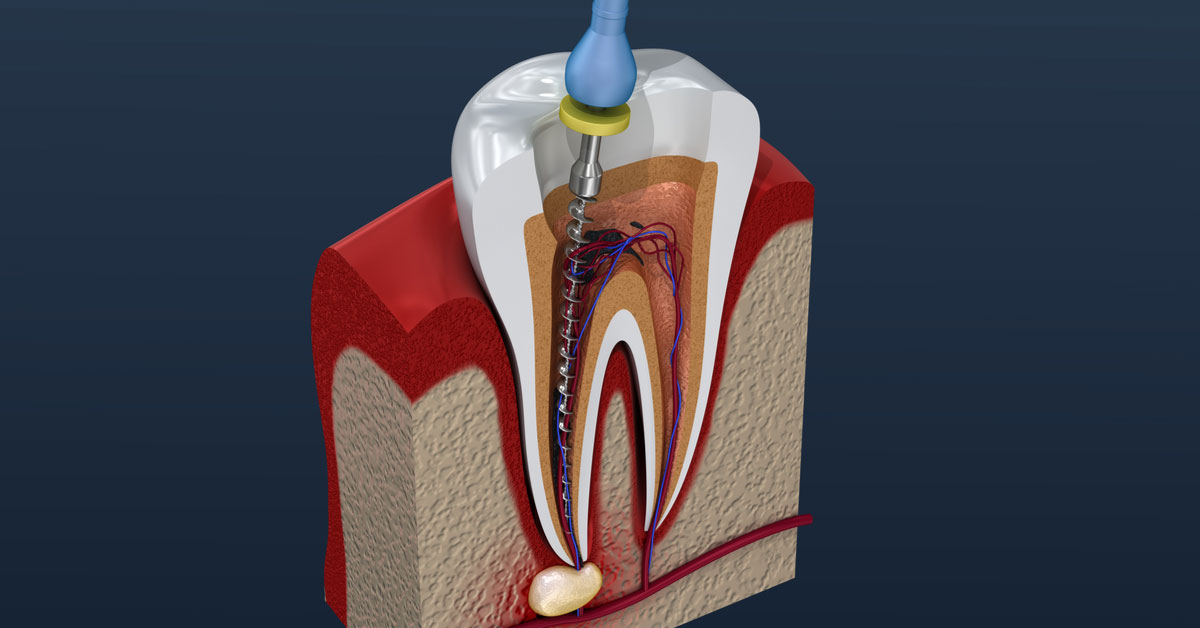
- Home
- About
- Our Team
- Services
- Postoperative Care
- Smile Gallery
- Medical Tourism
- Blog
- Offers
- Contact Us
- Home
- About
- Our Team
- Services
- Postoperative Care
- Smile Gallery
- Medical Tourism
- Blog
- Offers
- Contact Us

The moment a dentist suggest a root canal therapy, apprehensiveness sets in for many patients. It’s good to be aware of the norms of the treatment. Root canal therapy is a minimally invasive procedure, which is done to alleviate pain by removing the nerve tissue, followed by shaping, cleaning, filling up to the root canals and placing a crown on the affected tooth.
Root canal therapy is indicated when the root tissue called the pulp of the teeth is affected. This pulp is the innermost region of the teeth, which is made up of nerve tissue and is responsible for pain and sensitivity of the tooth. This can be affected because of caries, gum infection, cracked tooth or hit injury etc.
Once affected, sensitivity to hot and cold liquids, inflammatory signs such as pain and swelling with or without pus formation may be associated with the tooth. Depending on the severity the infection, it can spread to face and neck region, sometimes posing a life threatening situation as well. Infection can rarely spread to heart and lungs also, so it’s always better to clear the foci of infection where necessary. Your dentist will decide on such situations to go for an RCT, as it will help in drainage of infections and prevent spread.
The process involves giving a local anaesthesia injection to the required region and numbing the surrounding tissues. The pulp is a soft tissue that is present below a hard dentin of the tooth. It takes a few minutes to reach the pulp by piercing the dentin, after which the root tissue is removed using small low speed instruments, and the canal region is shaped and cleaned up of any debris or germs.
Once canals are shaped and completely irrigated, it is filled up with an inert filling material through the root region up to their tips. This is verified using an x-ray which is taken before sealing the filling.
Once the root tissue is removed, the tooth becomes dead, so in order to function in par with the other teeth, it has to be protected to bear the functional stresses of the oral cavity. Hence a root canal filling is always followed by tooth preparation and a crown on the treated tooth. If the crown is not done on the treated tooth, it tends to fracture due to its brittle nature.
There is very little discomfort or rather no pain associated with root canal therapy. A local anaesthesia is always given to numb the region. One in ten patients will feel the pain on excising the pulp tissue, in spite of taking the injection. Such patients are given shots additionally, directly onto the pulp region before excision. Sedation dentistry option is also opened for root canal therapy for a pain free procedure.
Since it’s a long procedure, opening the mouth for a long time does cause some discomfort to the oral muscles. Bite blocks can be used to relieve stress on the muscles on prolonged mouth opening.
Care should be taken to eat soft foods after the procedure so as to apply minimal stress to the treated tooth. Pain killers are given post treatment. Antibiotics are given only if the tooth is infected. Once the Permanent Crown is done after a week, the tooth can perform all normal functions like a healthy tooth.
Book an appointment with us at Oris Dental Center for any further queries and clarifications.